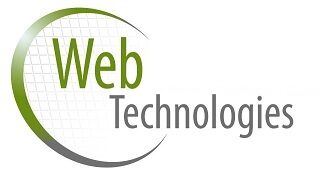In today’s fractured media landscape, your audience is everywhere: on websites, mobile apps, social feeds, newsletters, smart TVs, and voice assistants. For media companies, the challenge is no longer just creating compelling content, but managing and publishing it consistently across every single channel—and doing it with lightning speed.
If your current Content Management System (CMS) forces your team to manually reformat and re-upload the same article for five different platforms, you are losing the race for audience attention. The key to conquering this complexity is Multi-Channel Agility, powered by a unified, modern CMS architecture.
The Pitfalls of the Monolithic Past
Traditional, or “monolithic,” CMS for media companies platforms were built for a single destination: a desktop website. In this legacy model:
- Content and Presentation are Entangled: The content, its design, and its code are inseparable. Changing the look on one platform means a complex, platform-specific overhaul.
- Duplication is Rampant: Publishing to an app, a website, and a syndicated partner requires three separate content entries, leading to inconsistencies and multiplying editorial effort.
- Future-Proofing is Impossible: When a new channel—like an interactive news dashboard or a smart watch—emerges, the entire system often needs a costly and time-consuming rebuild.
This old way of working is a drag on editorial time, an anchor on speed-to-market, and a serious impediment to growth.
The Rise of the Unified Content Hub
A modern, multi-channel-ready CMS—often a Headless or Hybrid architecture—separates the content from the presentation layer. Think of it as a central, intelligent repository for all your media assets, text, and data. This separation is the foundation of agility:
1. Content-First, Channel-Agnostic Creation
In a unified system, editors focus purely on the content structure and quality, without worrying about how it will look on an iPhone versus a desktop browser.
- Structured Content: Content is broken down into modular, reusable components (headline, body, author, images, video) and stored via an API.
- Create Once, Publish Everywhere (COPE): The same core content assets can be automatically pulled, styled, and delivered to any front-end application. An API handles the heavy lifting, ensuring a consistent message and brand voice across all touchpoints.
2. Accelerating Time-to-Market
In the 24/7 news cycle, speed is a competitive edge. A unified CMS drastically cuts down the time from content creation to audience consumption.
- Streamlined Workflows: Editors can hit “Publish” and see the content appear instantaneously across the main website, the mobile app, and their social posting tools, all powered by the same central source.
- Independent Development: Because the back-end content is decoupled, developers are free to use modern, speedy frameworks to build new front-ends (or update existing ones) without disrupting the editorial team’s publishing schedule.
3. True Audience Personalization
Multi-channel delivery allows for sophisticated audience engagement. A unified content hub makes personalization a reality, not just a buzzword.
- Contextual Delivery: The CMS can dynamically pull content based on the user’s platform, location, or past behavior. A user on a mobile app might see a different, more interactive version of an article than a subscriber on a TV app.
- Data Integration: By integrating seamlessly with your Customer Relationship Management (CRM) and analytics tools, the CMS can identify a user as a “sports fan” and automatically prioritize the latest video highlights across their website, app, and email newsletter experience.
Choosing a unified CMS isn’t just a technology upgrade; it’s a strategic move that transforms your media operation. It trades the manual, platform-by-platform headache of the past for an efficient, agile content supply chain ready to meet your audience wherever the next trend takes them. Multi-channel agility is no longer optional—it is the prerequisite for modern media success.

